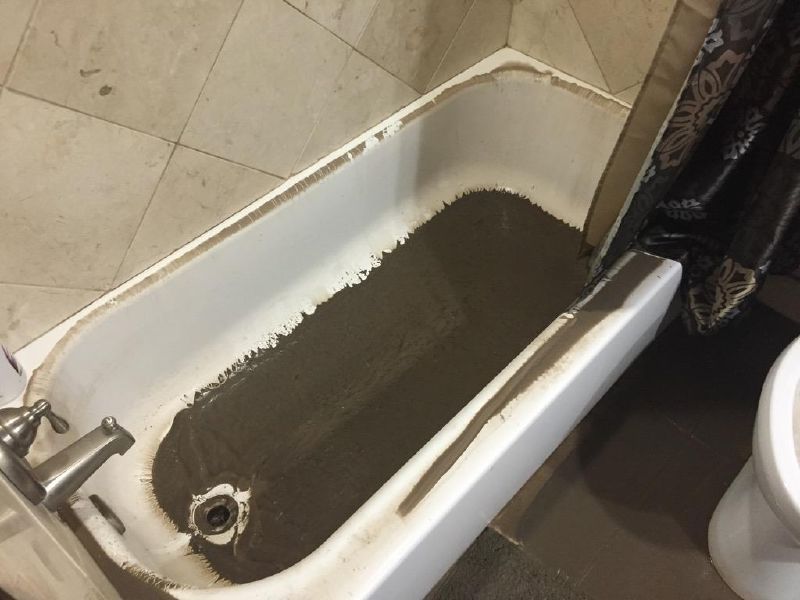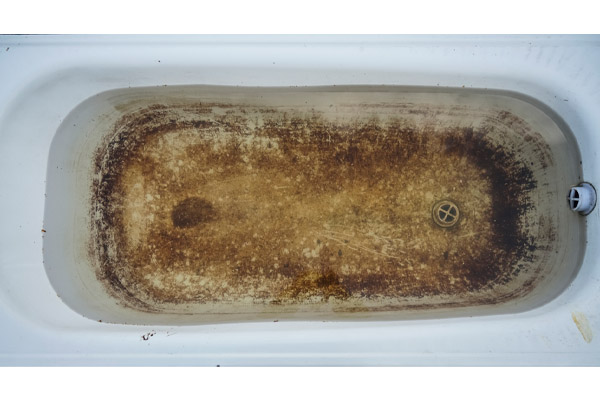Uncovering the Causes of Sewage Backflow in the Bathtub
Uncovering the Causes of Sewage Backflow in the Bathtub
Blog Article
What are your thoughts and feelings about What To Do If Sewage Starts Backing Up Into the Shower?

Sewer backup in the bath tub can be an upsetting and unhygienic trouble for any type of home owner. Not only is it troublesome, yet it also presents serious health and wellness threats and suggests underlying concerns with the plumbing system. Recognizing why sewer is showing up via the bath tub is essential for taking proper action to address the issue successfully.
Introduction to the Problem
Usual Reasons for Sewage Back-up
Obstructions in the Drain Line
One of the most typical root causes of sewage back-up is an obstruction in the sewage system line. This can occur because of the accumulation of debris, grease, or foreign objects in the pipelines, preventing proper circulation and creating sewer to back up into your bathtub.
Tree Origin Breach
Tree origins seeking moisture and nutrients can penetrate drain lines with small cracks or joints. With time, these roots can grow and increase, triggering significant damages to the pipes and leading to sewer backup concerns.
Understanding the Issue
When sewage draws back up into the tub, it's a clear indicator of a trouble with the water drainage system. The wastewater that needs to be flowing far from your home is instead discovering its back into your space, which can lead to significant damage and health hazards.
Potential Causes
Numerous aspects can add to sewage back-up in the tub. From obstructions in the sewage system line to problems with the plumbing infrastructure, recognizing the root cause is important for finding a remedy.
Aging Framework
Older homes may have dated plumbing systems that are a lot more at risk to rust, fractures, and deterioration. As pipelines age, they end up being extra vulnerable to leakages and clogs, boosting the likelihood of sewer backup cases.
Heavy Rainfall or Flooding
During periods of heavy rainfall or flooding, the drain system may come to be overloaded with excess water, triggering back-ups and overflows. This can lead to sewage backing up into bathtubs and other fixtures inside the home.
Indicators of Sewage Backup
Foul Odors
Undesirable odors originating from drains pipes or components, specifically in the restroom, may indicate sewer back-up issues. These odors are frequently strong and consistent, signaling a problem that calls for immediate attention.
Slow Draining Fixtures
Bathtubs, sinks, and toilets that drain pipes gradually or not in all could be experiencing sewage back-up. If multiple fixtures are influenced concurrently, it's most likely that the issue stems from an usual factor, such as the main sewer line.
Gurgling Sounds
Unusual gurgling or bubbling sounds coming from drains pipes when water is running in other places in your house are indicative of air caught in the plumbing system. This air buildup can result from sewer backup and should be checked out without delay.
Health And Wellness Risks Related To Sewer Backup
Contamination of Supply Of Water
Sewer backup can contaminate the water system in your home, posturing a major wellness threat to you and your household. Exposure to contaminated water can result in gastrointestinal concerns, skin infections, and other health problems.
Mold and mildew Development
Dampness from sewage back-up can produce perfect problems for mold and mildew growth in your house. Mold spores can worsen respiratory system problems and trigger allergies in sensitive individuals, making prompt cleanup crucial.
Spread of Illness
Sewer includes harmful germs, infections, and bloodsuckers that can create a variety of illness, consisting of hepatitis, cholera, and gastroenteritis. Entering contact with sewage or infected surface areas places you at risk of infection.
Cleaning Up After Sewage Backup
Disinfection Procedures
Completely sanitize and sterilize affected locations after sewage backup to remove damaging bacteria and stop mold and mildew development. Use appropriate cleaning items and safety equipment to make certain safe and effective cleanup.
Repair of Impacted Areas
Repair any type of damage to flooring, walls, or components triggered by sewer backup. Relying on the degree of the damages, you may require to replace carpets, drywall, or various other products to recover your home to its pre-loss problem.
Immediate Actions to Take
Shutting Off Supply Of Water
In case of sewage back-up, it's essential to turn off the supply of water to stop additional contamination and damage. Situate the primary water shutoff valve in your house and closed it off till the problem can be settled.
Calling an Expert Plumber
Dealing with sewage backup is not a do it yourself task. Call a certified plumber with experience in taking care of sewage-related concerns to assess the circumstance and perform necessary repair services or cleanings.
Avoiding Contact with Infected Water
Up until the sewage back-up is resolved, stay clear of contact with contaminated water to avoid the spread of germs and pathogens. Wear safety equipment if you have to be in the affected area and wash your hands completely afterward.
Safety nets
Regular Upkeep of Sewer Lines
Arrange regular examinations and maintenance of your drain lines to recognize and deal with possible issues before they rise into major problems. This can consist of clearing out particles, evaluating for tree origin invasion, and fixing any damaged pipes.
Mounting Backwater Valves
Take into consideration installing backwater valves in your plumbing system to prevent sewage from flowing back right into your home during durations of heavy rainfall or flooding. These shutoffs immediately close when water draws back up, securing your home from contamination.
Correct Disposal of Household Waste
Avoid purging anything other than bathroom tissue and human waste down the bathroom to prevent obstructions and blockages in the sewage system line. Dispose of grease, oil, and various other home chemicals appropriately to decrease the threat of plumbing troubles.
Why is Sewage Coming Up Through Your Bathtub?
Reasons You May Have Sewage in Your Bathtub
All the drains in your home lead down different pipes to get to the main sewer line. If you’re seeing sewage in the bathtub, the problem is that the main sewer line is clogged up, which is causing the water running through other drains to be pushed back into other pipes. The problem isn’t the bathtub, but the main line. The sewer line can get backed up by anything that goes down the drain, from food waste, hair and soap particles to jewelry or children’s toys. Tree branches or dirt can also impact the sewer line. If you’re seeing sewage in the bathtub, you have a big problem that usually needs a professional plumber. Trying to fix this problem without the right tools or knowledge can lead to bigger plumbing problems.
Fixing a Clogged Sewage Line
Although you shouldn’t try to fix the clogged sewer line on your own, you may be able to mitigate the issue until you can get a plumber to your home. A plunger isn’t going to help, because it won’t be able to reach the sewage drain to unblock the problem.
Turn Off Water
Find the main shutoff valve to your home to turn off the water. This prevents more water from going down the drain which is only going to flow back into your bathtub.
Snake the Toilet and Drain
Start by using a drain pipe snake to clean out the toilet drain. Rotate the snake clockwise when you push the snake down. As you pull it out, the snake should spin counterclockwise. Follow up by snaking out the bathtub drain. If you are successful, both the toilet and shower will drain efficiently. If you’re not successful, you probably have a bigger problem than your tools and experience can manage.
Contact a Professional Plumber
Pros have the tools to find the source of the problem and the experience to manage big blockages without causing more damage to your pipes. It can save you a lot of stress by contacting the professionals sooner rather than later.
Identify the Early Signs of a Clogged Sewage Line
If you’re gearing up for a holiday family gathering or just want to avoid the hassle of a clogged sewage line in your home, make sure you recognize the signs of a clogged sewer line.
Slow drains are a sign of a sewer line problem. Gurgling drains from any drain in your home indicate that you may have an obstruction in the drains. If your toilet keeps getting clogged, it might be a problem with the sewer line. When you see laundry water or water from the dishwasher in different sinks in the home, it’s an indication that your sewer drain is beginning to get backed up. These symptoms can often be “fixed” temporarily to get through a day or week before you start seeing the same problem. When it comes to plumbing problems, you want to fix the root of the problem instead of muddling through. The clog will not go away on its own.
https://handymanconnection.com/mississauga/articles/why-is-sewage-coming-up-through-your-bathtub/

We are very fascinated by Why is There Sewage Coming Up Through the Bathtub and I hope you enjoyed the piece. Sharing is good. You never know, you may just be doing someone a favor. We thank you for reading our article about Water Coming up Bathtub Drain.
Top Article
Report this page